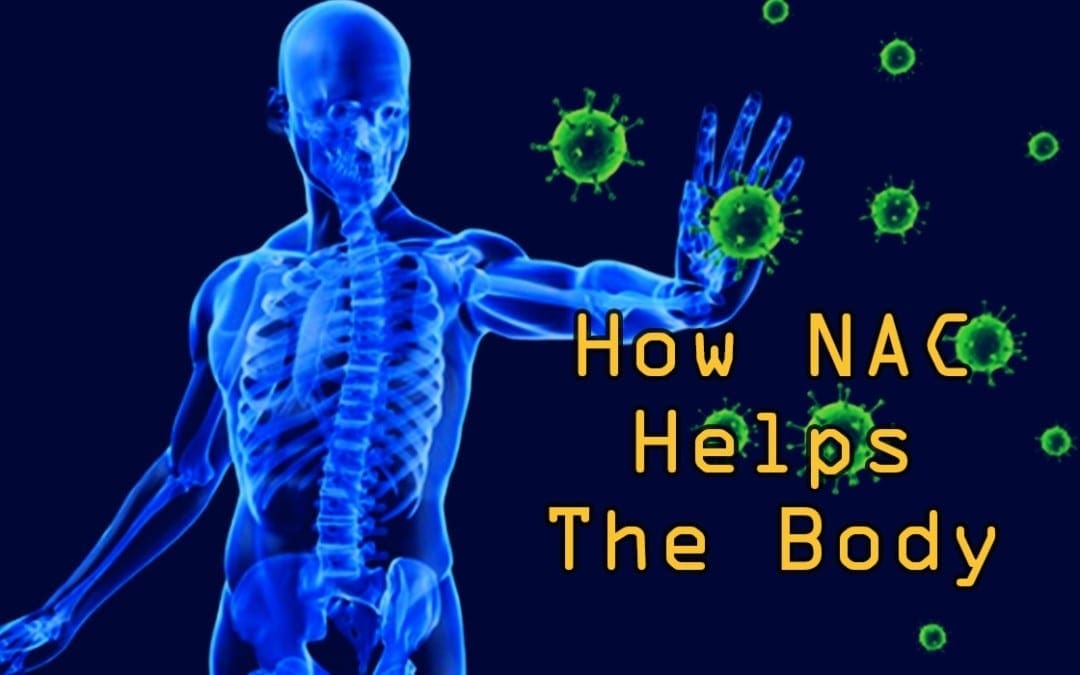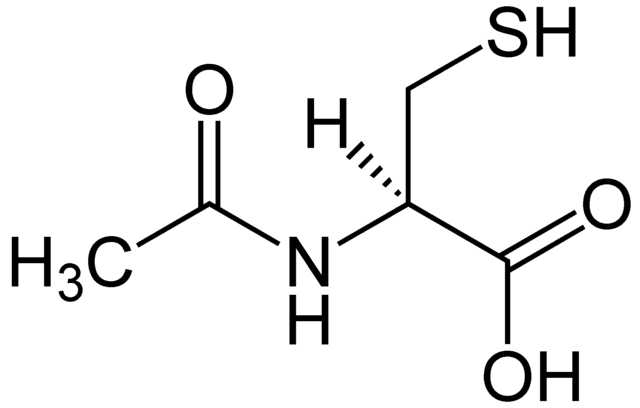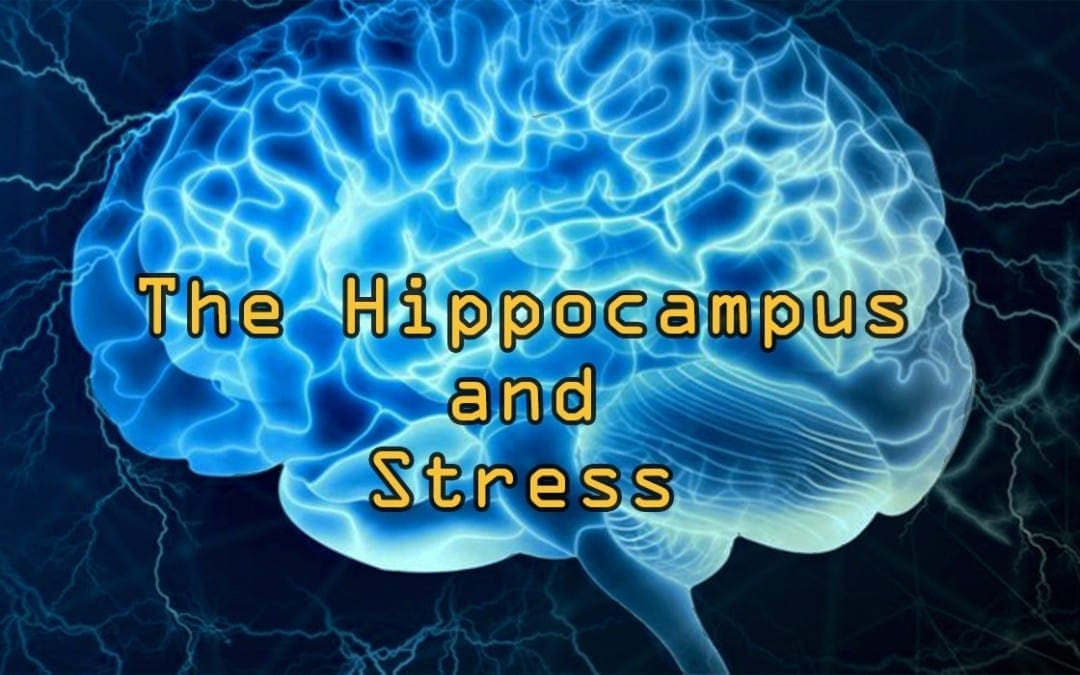
by Dr Alex Jimenez DC, APRN, FNP-BC, CFMP, IFMCP | Functional Medicine, Health, Nutrition, Supplements, Wellness
Do you feel:
- Afternoon fatigue?
- Under a high amount of stress?
- Mental sluggishness?
- Headaches with exertion or stress?
- Inflammation in certain parts in your body?
If you are experiencing any of these situations, then you might have suffered from glutathione deficiency, why not trying some NAC supplements.
NAC and Its Benefits
NAC or N-Acetyl Cysteine is an amazing semi-essential amino acid. This amino acid can be produced from the body through other amino acids like methionine and serine. It can only become an essential amino acid when dietary intake of methionine and serine are low in the body. When a person is trying to incorporate NAC in their diet, it can be found in high protein foods like meats, dairies, and legumes. Studies show that consuming NAC is essential for a variety of health reasons, especially replenishing the most potent antioxidant, glutathione in the body.

Since NAC is a nutritional supplement that is exceedingly powerful, it can help glutathione be elevated in biosynthesis. NAC is recognized for supporting average mucous production, respiratory function, and eye health positively. Research shows that NAC can protect cell and tissue health from chronic illnesses and providing support for a healthy mental status in the body. There is even more research on NAC supplements, especially when someone increases their intake on the supplement. When there is an increase in NAC, and when it is consumed in the body, the effects are astounding. The NAC supplements can help the body boost the levels of some of the neurotransmitters and improving mental health.
In a 2011 study, researchers found that NAC is emerging to be a useful agent to help treat psychiatric disorders. The results of using NAC supplements to treat psychiatric disorders has helped alleviate some of these symptoms:
- Addiction
- Compulsive and grooming disorders
- Schizophrenia
- Bipolar disorders
- Alzheimer�s disease
Since NAC can exert beneficial effects on the body, this supplement is useful to provide antioxidant, neuropathy, and anti-inflammatory properties to make sure that the body is functioning. Studies show that NAC can improve the outcomes of reducing lipopolysaccharides inflammation and preventing oxidative stress from being overexposed.
With NAC being a sulfur-containing derivative for the amino acid L-cysteine, this supplement provides supportive antioxidants and detoxification mechanisms for the body. Studies show that NAC can support the body�s antioxidant activity by neutralizing highly reactive hydroxyl radicals and serving as a source to sulfhydryl groups. They are thus enhancing the production or tripeptide glutathione in the body since it is a crucial component for antioxidant and detoxification enzymes.
Glutathione

Glutathione is a powerful antioxidant that has recently gained attention for its fantastic health benefits. This powerful antioxidant is found in every cell in the human body and can be absorbed in oral form. Research shows that even though the absorption of oral glutathione may be limited, the NAC supplementation can significantly increase the circulating levels of glutathione in the body. Studies stated that individuals who are infected with HIV, have glutathione deficiency in their system and have been associated with an impaired T-cell function and survival. So taking NAC orally can be used to replenish glutathione deficiency and is useful in the HIV infection.
Another study showed that taking NAC orally can help improve the responses of patients with chronic lung disease (CLD), chronic obstructive pulmonary disease (COPD), and cystic fibrosis (CF). The beneficial effects of taking NAC orally shows a decrease of inflammation in the lungs, improving the lung function, and reducing the neutrophil burden in cystic fibrosis airways.
Once this is done, though, NAC can help promote the production of glutathione and incorporate it into the crucial antioxidant enzymes and detoxification enzymes. With these enzyme activities being in play in the body, the glutathione is helping out by directly supporting their activities and the metabolism breakdown. Glutathione can also participate in fatty acid synthesis and can transport across the cell membrane.
Glutathione Factors
There are a variety of factors that can determine the requirements that glutathione can provide for the body. Glutathione can help control the toxin level exposure, increase the detoxification, and provide the overall needed support for antioxidants. Studies show that maintaining glutathione levels are essential to maintain the necessary health of the respiratory, hepatic, and the immune system from inflammation.
Research shows that since glutathione has multiple metabolic actions, they are essential for cellular homeostasis. Since it plays an important role, diseases like HIV, oxidative stress, chronic lung disease, and COPD can lower the body’s glutathione. The best way to make sure that individuals who have any chronic diseases, take NAC orally to prevent glutathione deficiency.
Glutathione can even help support antioxidant protection for lipids and proteins for the body as well as helping to maintain the standard response of inflammation due to injury. Studies show that elderly adults have altered their cellular redox levels and their dysregulated immune responses. Researchers also found out that the progression of chronic degenerative diseases of aging and that glutathione decreases with age naturally.
Conclusion
NAC is a semi-essential amino acid that has outstanding properties for the body. It helps replenishes the body�s glutathione and alleviate the symptoms caused by chronic illnesses. Taking NAC supplements is highly essential since it helps maintain adequate levels of glutathione to support overall health and well-being in the body. Some products help support glutathione levels as well as working well with NAC supplements by providing more excellent stability, bioavailability, and digestive comfort.
The scope of our information is limited to chiropractic, musculoskeletal, and nervous health issues or functional medicine articles, topics, and discussions. We use functional health protocols to treat injuries or disorders of the musculoskeletal system. Our office has made a reasonable attempt to provide supportive citations and has identified the relevant research study or studies supporting our posts. We also make copies of supporting research studies available to the board and or the public upon request. To further discuss the subject matter above, please feel free to ask Dr. Alex Jimenez or contact us at 915-850-0900.
References:
Atkuri, Kondala R, et al. �N-Acetylcysteine–a Safe Antidote for Cysteine/Glutathione Deficiency.� Current Opinion in Pharmacology, U.S. National Library of Medicine, Aug. 2007, www.ncbi.nlm.nih.gov/pmc/articles/PMC4540061/.
Dean, Olivia, et al. �N-Acetylcysteine in Psychiatry: Current Therapeutic Evidence and Potential Mechanisms of Action.� Journal of Psychiatry & Neuroscience : JPN, Canadian Medical Association, Mar. 2011, www.ncbi.nlm.nih.gov/pmc/articles/PMC3044191/.
Favier, A., et al. �Antioxidant Status and Lipid Peroxidation in Patients Infected with HIV.� Chemico-Biological Interactions, Elsevier, 23 Jan. 2003, www.sciencedirect.com/science/article/abs/pii/000927979490037X?via%3Dihub.
Grandjean, EM, et al. “Efficacy of Oral Long-Term N-Acetylcysteine in Chronic Bronchopulmonary Disease: a Meta-Analysis of Published Double-Blind, Placebo-Controlled Clinical Trials.” Clinical Therapeutics, Centre for Reviews and Dissemination (UK), Feb. 2000, www.ncbi.nlm.nih.gov/pubmed/10743980.
Hu, Heng-long, et al. �Antioxidants May Contribute in the Fight against Ageing: an in Vitro Model.� Mechanisms of Ageing and Development, Elsevier, 26 Jan. 2001, www.sciencedirect.com/science/article/abs/pii/S0047637400002128?via%3Dihub.
Keogh, Julian P., et al. �Cytotoxicity of Heavy Metals in the Human Small Intestinal Epithelial Cell Line I?407: The Role of Glutathione.� Taylor & Francis, 20 Oct. 2009, www.tandfonline.com/doi/abs/10.1080/15287399409531926.
Nakamura, Hajime, et al. �Redox Imbalance and Its Control in HIV Infection.� Mary Ann Liebert, Inc., Publishers, 5 July 2004, www.liebertpub.com/doi/10.1089/15230860260196245.
Nall, Rachel. �NAC: Use, Benefits, and Side Effects.� Medical News Today, MediLexicon International, 4 Dec. 2019, www.medicalnewstoday.com/articles/327219.php.
Ottenw�lder, H., and P. Simon. “Differential Effect of N-Acetylcysteine on Excretion of the Metals Hg, Cd, Pb, and Au.” SpringerLink, Springer-Verlag, July 1987, link.springer.com/article/10.1007/BF00295763.
Pace, Gary W., and Cynthia D. Leaf. �The Role of Oxidative Stress in HIV Disease.� Free Radical Biology and Medicine, Pergamon, 14 Jan. 2000, www.sciencedirect.com/science/article/abs/pii/0891584995000472?via%3Dihub.
Roberts, Robert L., et al. �N -Acetylcysteine Enhances Antibody-Dependent Cellular Cytotoxicity in Neutrophils and Mononuclear Cells from Healthy Adults and Human Immunodeficiency Virus-Infected Patients.� OUP Academic, Oxford University Press, 1 Dec. 1995, academic.oup.com/jid/article-abstract/172/6/1492/820544?redirectedFrom=fulltext.
Rosa, De, et al. �N?Acetylcysteine Replenishes Glutathione in HIV Infection.� Wiley Online Library, John Wiley & Sons, Ltd (10.1111), 24 Dec. 2001, onlinelibrary.wiley.com/doi/abs/10.1046/j.1365-2362.2000.00736.x.
White, Alexander C., et al. �Glutathione Deficiency in Human Disease.� The Journal of Nutritional Biochemistry, Elsevier, 17 Jan. 2003, www.sciencedirect.com/science/article/abs/pii/0955286394900396.
Witschi, A., et al. �The Systemic Availability of Oral Glutathione.� SpringerLink, Springer-Verlag, Dec. 1992, link.springer.com/article/10.1007%2FBF02284971.
Yal�in, Elvan, et al. �N-Acetylcysteine in Chronic Blepharitis.� Cornea, 1 Mar. 2002, insights.ovid.com/crossref?an=00003226-200203000-00007.

by Dr Alex Jimenez DC, APRN, FNP-BC, CFMP, IFMCP | Functional Medicine, Health, Hormone Balance, Mental Health, Wellness
Do you feel:
- Stressed out?
- Have uncontrollable weight gain?
- Can you not remember specific stuff?
- Agitated, jittery, anxious?
- Inflammation?
If you are experiencing any of these situations, then your hippocampus might be lowered than usual.
The Hippocampus
In the brain, there is an S-shaped structured located in the inner folds in the temporal lobe called the hippocampus. The hippocampus is a complex brain structure that has a layer of densely packed neurons, and its primary function involves how humans learn and how their memory works. The hippocampus is part of the limbic system as well since it works the feeling and reacting function in the body. The limbic system is situated at the edge of the cortex and includes the hypothalamus and the amygdala.

These structures help controls the body�s different functions like the endocrine system and the �fight or flight� reaction response. With the hippocampus helping humans process what information they are learning, this structure can retrieve two kinds of memories that are important; they are declarative memories and spatial relationship memories.
- Declarative memories: These are memories that are related to facts and events a person experience. It includes examples like how to memorize speeches or line in a play that a person is doing.
- Spatial relationship memories: These memories involve pathways or routes that a person must learn. An example of this is transportation drivers like cab drivers, bus drivers, and truckers who have to learn the routes in the places they are going to. So they use spatial memory and practice their routes many times until they have it in their memories. The spatial relationship memories are stored on the right side of the hippocampus.
Sadly though, the hippocampus can be damaged by neurological diseases like Alzheimer�s disease and PTSD (Post-Traumatic Stress Disorder). When it is damaged, a variety of conditions can affect the hippocampus�s ability to do its job for the brain, thus making the individual suffer from retaining information.
Hippocampus Conditions
Several conditions can cause problems to the body when the hippocampus is damaged. This is known as hippocampus atrophy, where the neurons and neuronal volume in the hippocampal that is a loss.
Alzheimer�s Disease
Alzheimer�s disease is when an individual begins to lose their memory. When the hippocampus is damaged, it can cause a dissociation between the cortexes and leads to information registration failure. Studies show that when Alzheimer�s disease is progressing, the hippocampus will lose its volume, and it will become harder for an individual to function in their daily lives.
Epilepsy
When a person has epilepsy, it might be due to a damaged hippocampus. Research shows that around 50 to 75% of patients with this disease may have hippocampal sclerosis, and in case they have died, they have medial temporal lobe epilepsy. More research states that the mechanics of hippocampal sclerosis in epilepsy can be related to the development of inflammation on the uncontrolled local hippocampus and blood-brain barrier damage.
Hypertension
When the hippocampus is damaged, hypertension can happen to a person. Hypertension is another name for high blood pressure, and it can lead to severe health complications to the body. Even though the causes of hypertension are still unknown, the risk factors from hypertension can include:
- Environmental factors like stress or a lack of exercise
- Hormone activity
- Blood plasma
Studies show that hypertension and other risk factors are being increasingly viewed as a putative factor that is leading to hippocampal atrophy.
Cushing�s Disease
Cushing�s disease or Cushing syndrome is when the body is exposed to high levels of cortisol for a long time. Studies show that when there is a loss of cellular volume to the corticosteroid�s levels in the body and it could be responsible. When there is too much cortisol being produced in the body, it is one of the signs of Cushing syndrome. Some of the other signs include:
- Weight gain
- Fatty tissue deposits around the midsection, face, upper back and between the shoulders
- Pink or purple stretch marks
- Thinning, fragile skin that bruises easily
- Slow healing cuts, insect bites and infections
- Acne
- Muscle weakness
- Cognitive difficulties
- Loss of emotional control
Since stress does play a role in the endocrine system and the neurological system, there are nearly 80 years of research on how much focus has been on the various levels of the HPA (hypothalamic-pituitary-adrenal) axis and the hormones it produces. It shows that glucocorticoids as the mediators for the stress effects on the hippocampus and being the contributing factor for stress-associated psychopathologies.
Conclusion
The hippocampus is located in the temporal lobe of the brain. This S-shaped structure can be easily damaged due to stress and other neurological factors that can affect the entire body and its systems. When harmful factors affect the hippocampus, it can lead the hormones that are producing to become imbalanced and cause dysfunction. Some products are here to make sure that the endocrine system is functioning properly and supporting the metabolic system, the gastrointestinal system, as well as making sure the hormones are balanced.
The scope of our information is limited to chiropractic, musculoskeletal, and nervous health issues or functional medicine articles, topics, and discussions. We use functional health protocols to treat injuries or disorders of the musculoskeletal system. Our office has made a reasonable attempt to provide supportive citations and has identified the relevant research study or studies supporting our posts. We also make copies of supporting research studies available to the board and or the public upon request. To further discuss the subject matter above, please feel free to ask Dr. Alex Jimenez or contact us at 915-850-0900.
References:
Anand, Kuljeet Singh, and Vikas Dhikav. �Hippocampus in Health and Disease: An Overview.� Annals of Indian Academy of Neurology, Medknow Publications & Media Pvt Ltd, Oct. 2012, www.ncbi.nlm.nih.gov/pmc/articles/PMC3548359/.
Dresden, Danielle. �Hippocampus: Function, Size, and Problems.� Medical News Today, MediLexicon International, 7 Dec. 2017, www.medicalnewstoday.com/articles/313295.php.
Felman, Adam. �Hypertension: Causes, Symptoms, and Treatments.� Medical News Today, MediLexicon International, 22 July 2019, www.medicalnewstoday.com/articles/150109.php.
Kim, Eun Joo, et al. �Stress Effects on the Hippocampus: a Critical Review.� Learning & Memory (Cold Spring Harbor, N.Y.), Cold Spring Harbor Laboratory Press, 18 Aug. 2015, www.ncbi.nlm.nih.gov/pmc/articles/PMC4561403/.
Team, Mayo Clinic. �Cushing Syndrome.� Mayo Clinic, Mayo Foundation for Medical Education and Research, 30 May 2019, www.mayoclinic.org/diseases-conditions/cushing-syndrome/symptoms-causes/syc-20351310.

by Dr Alex Jimenez DC, APRN, FNP-BC, CFMP, IFMCP | Chiropractic, Functional Medicine, Headaches & Treatments, Health Coaching, Integrative Medicine
Have You Been Experiencing:
- Fatigue?
- Headaches?
- Joint Pain?
- Overall discomfort?
For most individuals experiencing symptoms,� health care providers will run a few tests. For the most part, these tests come back normal or inconclusive. The patient is usually relieved, but not satisfied as they are still experiencing symptoms. The truth of the matter is, most tests practitioners run on patients are basic.
What Does That Mean?
It means that they are checking your levels and ruling out issues based on standard testing, but they are not diving deep into the cause of the symptom itself. Most individuals have a family history of one or more autoimmune diseases. An autoimmune disease is when the body misidentifies its own cells as a foreign body leading them to attack. These diseases can be triggered at any point in one’s life.
So What Do I Do Now?
Due to family history,� an ANA test can be run. Most of the time for patients still experiencing symptoms after the standard tests came back negative, the ANA comes back positive. However, a positive test does not always mean answers. This test can provide useful information but does not include a definitive answer as to what kind of autoimmunity a patient may have.
Using A Functional Approach
In modern/traditional medicine, most practitioners will suggest the patient is fine and that there is nothing to treat until they have been diagnosed. However, by using a more naturopathic and holistic approach, integrative practitioners can take these symptoms and use them to the patient’s advantage to help avoid a full-blown diagnosis.� The main reason this is effective is due to the fact that individuals do not just wake up one day with a new disease, but rather there are steps progressing in the background that eventually build up to a diagnosis if not treated.
Uncovering the underlying issue and using this stage in someone’s life as an opportunity to improve their quality of living is what functional medicine revolves around. By combining symptoms, previous lab results, and the patients declining quality of life, testing that relates to triggers of autoimmunity can be conducted. These tests will provide insightful information allowing the practitioner to not only treat the symptom but more importantly, to treat the cause.
Testing
There are multiple factors, including environmental that cause an autoimmune response to start to express. There are certain markers in the body that will shift before the onset of the autoimmune disease in which the environmental triggers will be shown.
Many labs are equipt to test for these markers and use top of the line technology. Some tests that evaluate these triggers that contribute to the progression of autoimmunity are:
The Gut Zoomerfrom Vibrant Wellness:The Gut Zoomer provides information and patient potential risks for intestinal permeability, IBS & IBD, SIBO, celiac, MS, obesity, diabetes, nutrition, viruses, fungal or yeast species, worm species, bile acids, SCFAs and more
The Food Sensitivity Panel from Vibrant Wellness:This test from Vibrant Wellness recognizes the specific antibody-to-antigen responses in commonly ingested foods. This panel tests for IgG and IgA sensitivity to the food antigens. This test is beneficial so patients do not have to an elimination diet, but rather have the test remove the guesswork and let results tell them what foods cause their body inflammation.
Dietary Antigen Test Plus from Dunwoody Labs:��This specific test from Dunwoody Labs allows the health care provider to see if there is an increased antibody response to food. Often times, the antibodies this screens for attack the body’s tissue leading to more autoimmune symptoms. This test looks at 4 separate antibody types IgE, IgG4, Total IgG, IgA, and complement.
Oxidative Stress Test from Dunwoody Labs:If the body is under large amounts of stress, this will cause an increase in the activity of T-Cells, thus keeping the body out of balance.
GI Microbial Assay Plus (GI-MAP� ) from Diagnostic Solutions: This is a stool test that not only analyzes but also evaluates the DNA of the actual organisms that are living in the gut. This allows the health care providers to see what is impacting health such as, mucus metabolism, methane production, T-Cells, and inflammatory LPS.�
Why Would I Want / Need This?
Preventative medicine provides the ability to keep up with, if not improve a patient’s quality of life while decreasing or avoiding the hard prescription medicine! By treating the underlying cause and not just masking the symptom, it allows individuals to truly feel better.
The number of individuals diagnosed with a disease that could have been prevented should earlier steps have been taken, is on the rise while their quality of life is declining. Feeling good should not be a delicacy, but rather a normal standard. With the use of integrative medicine, many grandparents will be able to play hide and seek and tag with their grandchildren, parents will be able to get through the day without as much fatigue and headaches, and children will be able to play, focus, and learn with fewer belly aches no matter the hour of the day. Integrative medicine not only utilizes tests to guide patients in the right direction but also gives patients tools and further educates them on exercise and nutrition components that will help prevent inflammation and stimulate good bacteria in their bodies to grow. – Kenna Vaughn, Senior Health Coach
*The scope of our information is limited to chiropractic, musculoskeletal, and nervous health issues or functional medicine articles, topics, and discussions. We use functional health protocols to treat injuries or disorders of the musculoskeletal system. Our office has made a reasonable attempt to provide supportive citations and has identified the relevant research study or studies supporting our posts. We also make copies of supporting research studies available to the board and or the public upon request. To further discuss the subject matter above, please feel free to ask Dr. Alex Jimenez or contact us at 915-850-0900.
Resources:
�Basic Oxidative Stress.� Dunwoody Labs, 20 July 2018, www.dunwoodylabs.com/index.php/ox-stress/.
Burdette, Cheryl. �Is There Such Thing as Being Pre-Autoimmune.� 3 Dec. 2019.
�Food Sensitivity.� Vibrant Wellness, www.vibrant-wellness.com/tests/food-sensitivity/.
�GI Microbial Assay Plus.� Diagnostic Solutions Laboratory, 8 Nov. 2019, www.diagnosticsolutionslab.com/tests/gi-map.
�Gut Zoomer.� Vibrant Wellness, www.vibrant-wellness.com/tests/gut-zoomer/.
�588 Dietary Antigen A, G, E, and C.� Dunwoody Labs, 17 Jan. 2019, www.dunwoodylabs.com/index.php/dietary-antigen-and-environmental-allergen-exposure-profiles/.

by Dr Alex Jimenez DC, APRN, FNP-BC, CFMP, IFMCP | Functional Medicine, Health, Hormone Balance, Nutrition, Remedies, Wellness
Do you feel:
- Inflammation?
- Hormone imbalances?
- Weight gain?
- Brain fog?
- Stomach pain, burning, or aching 1-4 hours after eating?
If you are experiencing any of these situations, then you might be experiencing low glycine levels in your body.
Glycine

Glycine is a vital amino acid that is beneficial to the body. It helps support the gastrointestinal system, the neurological system, the musculoskeletal system, and the body�s metabolism from harmful factors that can cause the human body to malfunction. Glycine is even a neurotransmitter and can help increase glutathione in the brain by providing anti-inflammatory effects. Glycine provides a sweet taste when it is consumed in the body. Even though glycine has a crucial role in the human body, the amino acid has received little to no attention until recently.
The fantastic thing about glycine is that it is a “non-essential” amino acid. What this means is that the body can make glycine by itself and distribute it to the necessary systems that need glycine. This is different from the “essential” amino acids since some nutrients and vitamins must come from the food diet themselves. When there is a mild deficiency of glycine, it is not harmful to the body; however, when there is a severe shortage of glycine, it can lead to immune response failure, slow body growth, and abnormal nutrient metabolism.
Glycine for The Brain
Since glycine is a neurotransmitter for the brain, it composes both excitatory and inhibitory capacities. For the excitatory capacity function, glycine serves as the antagonist for NMDA receptors for the brain. For inhibitory capacities, glycine helps increase the neurotransmitter serotonin. Studies show that serotonin is the ancestor of melatonin. When the levels are increased due to glycine supplements, the beneficial factors it causes can help reduce insomnia and provide better sleep quality.
Glycine on Sleep
Despite being a massive impact on serotonin, glycine has been known to be used as a therapeutic option for individuals to improve their sleep quality as a novel and safe approach.� Studies show that glycine can increase the blood flow to extremities by reducing the body�s core temperature, which is an important signal to initiate sleep. When this happens, glycine can increase a person�s time when they are in REM sleep, providing the person to have a good night’s sleep. Further research shows that glycine can inhibit the stimulatory orexin neurons that are responsible for arousal and energy homeostasis, which is critical and can induce non-REM sleep or even night waking.
Glycine�s Cognitive Effects
There are many beneficial cognitive effects that glycine has to offer. Research shows that the beneficial effect of glycine can help improve episodic memory in young and middle-aged adults. This can be beneficial for patients who have schizophrenia, Parkinson’s disease, and Huntington’s disease. Additional research also shows that patients who have Alzheimer’s disease use glycine as energy production for their brains.
Glycine Osteoprotective Effects
There is even more information on glycine supplementation, providing estrogen-like osteoprotective effects for menopausal women. The research shows that glycine helps decreased weight gain and providing an increase in vaginal weight gain caused by ovariectomy. Many healthcare providers recommend their female patients that have menopause to use glycine in their diet.
More Glycine Effects
Since glycine is a non-essential amino acid and a neurotransmitter for the central nervous system, this supplement can help supple muscle, bone, and connective tissue with collagen. Glycine has a small R group, which forms a triple helix structure that makes up of tropocollagen. In the body, 33% of all collagen is composed of glycine. Collagen levels in the body can decrease naturally due to anyone getting old. When this happens, inflammatory symptoms like arthritis occur. Researchers hypothesize that supplemental doses of glycine can strengthen joints and prevent reactive arthritis by blunting cytokine release by increasing chloride influx in the body.
Glycine is one of the three amino acids that can help aid the production of glutathione for the human body. Since this amino acid is a scavenger antioxidant, it will oppose proinflammatory signals from hydrogen peroxide. Studies show that glycine supplementation plays a vital role in balancing the redox reactions caused by metabolic syndrome in the human body and protecting patients from oxidative damage. There is even more research as a study stated that glycine has a vital role in the metabolism and nutrition of mammals and humans. Since glycine protects from inflammation and has fantastic health benefits for the body, when there are decreased levels of glycine in the body, it can be linked to metabolism-related disorders like type 2 diabetes and fatty liver disease.
Glycine provides cytoprotective effects on the liver and gastrointestinal tract by conjugating bile acids. This is crucial because glycine plays a role in helping lipids to be digested and lipid-soluble vitamins to be absorbed in the body. In alcohol-induced hyperlipidemia, studies have shown that glycine can reduce alcohol levels in the bloodstream while also retaining the membrane integrity by reducing lipid levels. Glycine can even protect the stomach and intestines from damages caused by gastrointestinal disorders. Since glycine can maintain enterocyte integrity and prevent apoptosis, its anti-inflammatory effects can fight oxidative stress. They can provide the requirements to the intestines and the gut in the body.
Conclusion
Glycine is a vital amino acid that provides anti-inflammatory properties for not only the body’s metabolism but also helps the gastrointestinal system. With more and upcoming research about glycine, it is essential for this amino acid to continue to provide outstanding effects to the human body and to make sure that it functions properly. When harmful factors start entering the body, or there is a glycine deficiency, it can cause the body to malfunction. So incorporating glycine-rich foods in the daily diet can help alleviate the symptoms gradually. Some products are beneficial for the body since they help support the immune system and make sure the body is functioning.
The scope of our information is limited to chiropractic, musculoskeletal, and nervous health issues or functional medicine articles, topics, and discussions. We use functional health protocols to treat injuries or disorders of the musculoskeletal system. Our office has made a reasonable attempt to provide supportive citations and has identified the relevant research study or studies supporting our posts. We also make copies of supporting research studies available to the board and or the public upon request. To further discuss the subject matter above, please feel free to ask Dr. Alex Jimenez or contact us at 915-850-0900.
References:
Bannai, Makoto, et al. �Oral Administration of Glycine Increases Extracellular Serotonin but Not Dopamine in the Prefrontal Cortex of Rats.� Wiley Online Library, John Wiley & Sons, Ltd (10.1111), 17 Mar. 2011, onlinelibrary.wiley.com/doi/full/10.1111/j.1440-1819.2010.02181.x.
D�az-Flores, Margarita, et al. �Oral Supplementation with Glycine Reduces Oxidative Stress in Patients with Metabolic Syndrome, Improving Their Systolic Blood Pressure.� Canadian Journal of Physiology and Pharmacology, U.S. National Library of Medicine, Oct. 2013, www.ncbi.nlm.nih.gov/pubmed/24144057.
File, S E, et al. �Beneficial Effects of Glycine (Bioglycin) on Memory and Attention in Young and Middle-Aged Adults.� Journal of Clinical Psychopharmacology, U.S. National Library of Medicine, Dec. 1999, www.ncbi.nlm.nih.gov/pubmed/10587285.
Griffin, Jeddidiah WD, and Patrick C Bradshaw. “Amino Acid Catabolism in Alzheimer’s Disease Brain: Friend or Foe?” Oxidative Medicine and Cellular Longevity, Hindawi Publishing Corporation, 2017, www.ncbi.nlm.nih.gov/pmc/articles/PMC5316456/.
Kawai, Nobuhiro, et al. �The Sleep-Promoting and Hypothermic Effects of Glycine Are Mediated by NMDA Receptors in the Suprachiasmatic Nucleus.� Neuropsychopharmacology: Official Publication of the American College of Neuropsychopharmacology, Nature Publishing Group, May 2015, www.ncbi.nlm.nih.gov/pmc/articles/PMC4397399/.
Kim, Min-Ho, et al. “Estrogen-like Osteoprotective Effects of Glycine in Vitro and in Vivo Models of Menopause.” Amino Acids, U.S. National Library of Medicine, Mar. 2016, www.ncbi.nlm.nih.gov/pubmed/26563333.
Li, X et al. “Dietary Glycine Prevents Peptidoglycan Polysaccharide-Induced Reactive Arthritis in the Rat: Role for Glycine-Gated Chloride Channel.” Infection and Immunity, American Society for Microbiology, Sept. 2001, www.ncbi.nlm.nih.gov/pmc/articles/PMC98707/.
McCarty, Mark F, et al. �Dietary Glycine Is Rate-Limiting for Glutathione Synthesis and May Have Broad Potential for Health Protection.� The Ochsner Journal, The Academic Division of Ochsner Clinic Foundation, 2018, www.ncbi.nlm.nih.gov/pmc/articles/PMC5855430/.
Razak, Meerza Abdul, et al. �Multifarious Beneficial Effect of Nonessential Amino Acid, Glycine: A Review.� Oxidative Medicine and Cellular Longevity, Hindawi, 2017, www.ncbi.nlm.nih.gov/pmc/articles/PMC5350494/.
Ross, Krista Anderson. �Glycine: Another Tool for the Hormone and Sleep Balancing Kit.� Doctor’s Data Specialty Testing Clinical Laboratory, 3 Dec. 2019, www.doctorsdata.com/resources/uploads/newsletters/Glycine’s-Role-in-Sleep-and-Hormone-Balancing.html.

by Dr Alex Jimenez DC, APRN, FNP-BC, CFMP, IFMCP | Functional Medicine, Health, Herbs, Nutrition, Wellness
Do you feel:
- Anxious or cannot focus on tasks?
- Do digestive problems subside with rest or relaxation?
- Stomach pains, burning, or aching 1-4 hours after eating?
- Redden skin?
- Nausea or vomiting?
If you are experiencing any of these situations, then you might be experiencing some digestive stress. Try some chamomile to reduce that stress and anxious mind.
Chamomile and its products are well-known for encouraging a healthy state of mind and for enhancing amazing sleep quality for anyone who takes this herb. This white and yellow blossom, however, has several impressive health benefits that are beneficial with anyone that’s feeling anxious in their daily, hectic lives and can provide other benefits for the body that has some ailments.
What is Chamomile?
Chamomile is an ancient medicinal plant by the Asteraceae family and is frequently known as the “earth apple on the ground” due to the apple-like fragrance it produces. Its blossoms have unique properties that could boost a person�s wellbeing and supplying beneficial nutrients that are remarkable for the body to relax and feel calm. This plant has existed for centuries and is native to eastern and southern Europe. Tons of research have shown that chamomile has been used in herbal remedies in ancient times during the Roman era, Greek era and Egypt era. The plant contains a thin spindle-shaped stem that produces tiny flower blossoms that resemble a daisy.
Chamomile Benefits

The chemicals of chamomile can serve as antioxidants in the human body and can prevent flare-ups from occurring. Because of this, when an individual is consuming chamomile goods; the health properties might help prevent the common cold, intestinal disorders from the gut, inflammation and many more body ailments that can affect the human body from functioning properly. There are two varieties of chamomile that have amazing properties that have been used for natural remedies are the German chamomile and the Roman chamomile.
- German Chamomile: This type of chamomile is popular around the world and native to southern and eastern Europe. Studies have shown that people would take chamomile by the mouth to relieve ailments caused by environmental factors. There are some people that will even apply chamomile on their skin as an ointment. There is some scientific evidence that using German chamomile as an oral rinse could be helpful for cancer patients that have mucositis, which is inflammation and ulceration of the mucosal membrane lining in the digestive tract caused from chemotherapy and radiotherapy.
- Roman Chamomile: This type of chamomile provides the same benefits as German Chamomile as it relieves the same ailments that environmental factors caused but also provides a bit more help to the body. Roman chamomile has hypnotic properties that help a person relax and falls asleep faster. There have been studies that this herb offered hypnotic effects to animals and when consumed, it decreased the amount of time for them to fall asleep.
The benefits that the chamomile plant provides are that it promotes the body to relax and other benefits that are essential to the body. When it is used as an essential oil for aromatherapy, the patient can feel less anxious when they breathe in the vapors and finally let their anxious mind relax.
Reducing Pain
The anti-inflammatory effect that both the essential oil and the chamomile flower itself can aid the body by reducing the pain that it has encountered. Since the chamomile plant has been used for hundreds, people have been using this plant to help reduce pain from inflammatory-related symptoms in the body they might be experiencing.
Studies have shown that people who consume herbal tea for their joint inflammation have shown an improvement especially in the knees and lower back. The antioxidant and anti-inflammatory properties that this herbal tea produces polyphenols that affect systemic inflammation and joint function in the body. Another study shows that patients with knee osteoarthritis used chamomile oil to decrease the stiffness in their joints and provide some beneficial effects on their physical function.
Heals and Promotes Skin Health
For anyone that has eczema and uses topical creams to reduce the redness, they might want to try using chamomile essential oil. The benefits of using chamomile essential oil are that it can help reduce irritated skin. A person can mix the chamomile essential oil with a carrier oil or lotion and apply it to their skin as the anti-inflammatory and antibacterial properties can calm down the red, dry, irritated skin while also decreasing breakouts from happening.
In some instances, there have been statements that chamomile is more effected than hydrocortisone lotion for skin lesions. Researchers found in a 2010 study, that German chamomile oil has been used to alleviate atopic dermatitis, which is a chronic skin disorder, by containing three major sesquiterpene constituents (azulene, bisabolol, and farnesene) by healing the skin gradually.
Improving Digestion
Another widespread use for chamomile, especially when it is brewed in a tea, is reducing unwanted symptoms that are associated with poor digestion in the digestive system. With chamomile tea, it can soothe an upset stomach, cramping, flatulence, and diarrhea. The therapeutic compounds that are found in chamomile can act as a digestive relaxant.
Improves Sleep and Relaxation
When it is brewed into a tea, chamomile can promote a person�s frame in mind and can enhance their sleep quality to provide them the necessary 8 hours of sleep. Research shows that individuals who drink chamomile tea before going to bed, have a better night’s sleep and relaxing a bit more. Apigenin provides a stimulant effect from chamomile tea and is bind with the benzodiazepine receptors in the brain, providing benefits that can help reduce stress from the body while also promoting a good night�s sleep.
In a 2017 study, the research shows that adults over the age of 60, consumed chamomile tea before they go to bed. The results showed that their sleep quality improved by reducing sleep complications like sleep apnea and the consumption of using sleep medication while improving their moods drastically over time.
Boosting Mental Wellness
Using chamomile products can benefit a person�s wellness. Since chamomile has beneficial properties to make the body relax, it can also help reduce the sensation of depression and anxiety in a person when it is consumed. Studies have stated that long-term chamomile intake is safe and may considerably reduce the effects of moderate to severe GAD symptoms in the body. Even using the oil for aromatherapy can be considered as an alternative for treatments for patients.
Conclusion
Thus chamomile is an effective and secured plant that has been used by individuals who have been experiencing a number of symptoms. Since chamomile is excellent for reducing pain, have better skin, improve mental health and provide many beneficial factors. When it is used in aromatherapy or consumed into the body, chamomile is a natural cure for a nervous mind. Some products combined with chamomile are designed to offer support to the gastrointestinal tract and make sure that sugar metabolism is functioning properly.
The scope of our information is limited to chiropractic, musculoskeletal, and nervous health issues or functional medicine articles, topics, and discussions. We use functional health protocols to treat injuries or disorders of the musculoskeletal system. Our office has made a reasonable attempt to provide supportive citations and has identified the relevant research study or studies supporting our posts. We also make copies of supporting research studies available to the board and or the public upon request. To further discuss the subject matter above, please feel free to ask Dr. Alex Jimenez or contact us at 915-850-0900.
References:
Abdullahzadeh, Mehrdad, et al. �Investigation Effect of Oral Chamomilla on Sleep Quality in Elderly People in Isfahan: A Randomized Control Trial.� Journal of Education and Health Promotion, Medknow Publications & Media Pvt Ltd, 5 June 2017, www.ncbi.nlm.nih.gov/pubmed/28616420.
Charousaei, Firuzeh, et al. �Using Chamomile Solution or a 1% Topical Hydrocortisone Ointment in the Management of Peristomal Skin Lesions in Colostomy Patients: Results of a Controlled Clinical Study.� Ostomy/Wound Management, U.S. National Library of Medicine, May 2011, www.ncbi.nlm.nih.gov/pubmed/21617262.
Christiansen, Sherry. �The Health Benefits of Roman Chamomile.� Verywell Health, Verywell Health, 14 Jan. 2019, www.verywellhealth.com/roman-chamomile-4571307.
Drummond, Elaine M, et al. �An in Vivo Study Examining the Antiinflammatory Effects of Chamomile, Meadowsweet, and Willow Bark in a Novel Functional Beverage.� Journal of Dietary Supplements, U.S. National Library of Medicine, Dec. 2013, www.ncbi.nlm.nih.gov/pubmed/24237191.
Health Team, eMedicine. �German Chamomile:Uses, Side Effects, Dosage, Interactions & Health Benefits.� EMedicineHealth, EMedicineHealth, 17 Sept. 2019, www.emedicinehealth.com/german_chamomile/vitamins-supplements.htm.
Mao, Jun J, et al. �Long-Term Chamomile (Matricaria Chamomilla L.) Treatment for Generalized Anxiety Disorder: A Randomized Clinical Trial.� Phytomedicine : International Journal of Phytotherapy and Phytopharmacology, U.S. National Library of Medicine, 15 Dec. 2016, www.ncbi.nlm.nih.gov/pubmed/27912875.
Shoara, Ruhollah, et al. �Efficacy and Safety of Topical Matricaria Chamomilla L. (Chamomile) Oil for Knee Osteoarthritis: A Randomized�Controlled Clinical Trial.� Complementary Therapies in Clinical Practice, U.S. National Library of Medicine, Aug. 2015, www.ncbi.nlm.nih.gov/pubmed/26256137.
Singh, Ompal, et al. �Chamomile (Matricaria Chamomilla L.): An Overview.� Pharmacognosy Reviews, Medknow Publications Pvt Ltd, Jan. 2011, www.ncbi.nlm.nih.gov/pmc/articles/PMC3210003/.
Srivastava, Janmejai K, et al. �Chamomile: A Herbal Medicine of the Past with Bright Future.� Molecular Medicine Reports, U.S. National Library of Medicine, 1 Nov. 2010, www.ncbi.nlm.nih.gov/pmc/articles/PMC2995283/.

by Dr Alex Jimenez DC, APRN, FNP-BC, CFMP, IFMCP | Functional Medicine, Health, Mind Body and Spirit, Nutrition, Weight Loss, Wellness
Do you feel:
- Unexplained weight gain?
- Excessive belching, burping, or bloating?
- Hungry an hour or two after eating?
- Hormone imbalances?
- Poor bowel function?
If you are experiencing any of these situations, then you might have experienced some trouble losing weight.
Trying to lose weight is harder than it looks. While the secret of losing weight is more accessible said than done, people are always trying to live healthier lives by exercising and eating right. Some people can maintain a healthy weight throughout their lives effortlessly; however, for others, it is a struggle that starts from when they were a kid, and it gets harder when they start growing up. There have been books on how to lose weight, and people gaining weight when they are middle-aged, it is shown around their mid-section of their bodies. Although when a person is trying to lose weight due to health reasons or wanting to get better, it can be a long, arduous journey.
There are many reasons why individuals are having trouble losing weight. It might be due to being older and that the body changes along with getting older as well. Here are some of the reasons why it is difficult to lose weight, the older a person gets.
Losing Muscle Mass
When a person age, their metabolism changes with them. When they are younger, their metabolism can make a person exercise with high intensity. As they get older, their metabolism changes, and they will slow down a bit when they are exercising. Not only that, but a person can lose their muscle mass when they reach the age of 30.
Studies have shown that the amount of lean muscle mass can naturally decline 3 to 8 percent per decade when a person hits 30, and it will be much harder when they are at the age of 60. This is due to sarcopenia. Sarcopenia is a condition that is characterized by losing skeletal muscle mass and functioning. This condition is progressive, and some of the risk factors include age, gender, and the level of physical activity a person is doing. Since the strength and muscle mass decline in older adults mostly, it can lead to acute and chronic diseases that can harm the body.

There is a way to combat muscle loss for anyone that wants to have lean muscles and to lose weight, is to add weight training to their exercise regime. Research shows that lifting weights is perfect for anyone to make sure that the body stays toned and muscular while also preventing a metabolic slowdown. Since male and females bodies are different, doing weight lifting will help the muscles look lean and toned for females, while for males, their muscles look more prominent and bulker, depending on the weights they are using and how many reps they are doing.
Getting Overly Stressed
As we get older, the more stress we can get. Stress is made up of the hormone cortisol, which is released into the body. It can also be in two categories, which are short term and long term. With short term stress, it is effortless to manage since a person can be worried about a project for school, getting a job interview, or worrying about the little things, the cortisol hormone is short term and can be easily managed.

When it is long-term stress, it can lead to chronic illnesses if it is in a person for far too long. The pressures of work, having too many obligations, or stressing out due to deadlines for projects are bad for a person to have since the cortisol levels are building up in the body. Even having a sedentary job can cause the body to develop stress and weight gain.
There are ways to reduce stress in the body like finding hobbies to enjoy, exercising, always help the body release the tension that is pent up, even having a self-care day can do many wonders to a person and their body. Trying to de-stress the body is excellent and beneficial to anyone because being stress-free is essential for losing weight.
Major Lifestyle Changes
When it comes to significant lifestyle changes, it can be any one of these changes that can cause a person to gain weight. It does not always happen from the inside, but it can happen to people when they enter their thirties. Some changes can include starting a family, trying to find time out of a hectic schedule, distractions, or homework. Whatever the reasons are, these lifestyle changes require much attention. When that happens, then the pounds start to creep in, causing weight gain.
Medical Condition

Sometimes when a person gains weight, it is due to a medical condition they might have, and it makes it harder for them to lose weight as well. These medical conditions include PCOS (polycystic ovarian syndrome), sleep apnea, and hypothyroidism. When these conditions affect the targeted body systems, it can cause many health problems to the body by causing it to dysfunction.

“There are many reasons why losing weight is hard for anyone. There is a wide variety of reasons like eating junk foods, not getting enough sleep, staying hydrated, or a hectic lifestyle. If we take the time to change one thing to maintain a healthy lifestyle, then the weight will slowly but surely go away.” -Dr. Alex Jimenez D.C., C.C.S.T. Insight
Conclusion
Losing weight is hard for anyone, and it can be easy for some while difficult for others. Since everyone has a different body structure, trying to lose weight is one of the more laborious tasks if an individual has problems trying to shed off the weight. By changing some of the habits that are causing the weight gain, it may be beneficial to not only the person but to their body. Some products can help the body’s metabolism and support the function of sugars and amino acids that help support even the gastrointestinal lining, the endocrine system, and help maintain the blood sugar levels.
The scope of our information is limited to chiropractic, musculoskeletal, and nervous health issues or functional medicine articles, topics, and discussions. We use functional health protocols to treat injuries or disorders of the musculoskeletal system. Our office has made a reasonable attempt to provide supportive citations and has identified the relevant research study or studies supporting our posts. We also make copies of supporting research studies available to the board and or the public upon request. To further discuss the subject matter above, please feel free to ask Dr. Alex Jimenez or contact us at 915-850-0900.
References:
Dray, Tammy. �Why Is It Harder to Lose Weight as You Get Older?� LIVESTRONG.COM, Leaf Group, 2019, www.livestrong.com/article/417064-why-is-it-harder-to-lose-weight-as-you-get-older/.
Gunnars, Kris. �20 Common Reasons Why You’re Not Losing Weight.� Healthline, 20 Aug. 2018, www.healthline.com/nutrition/20-reasons-you-are-not-losing-weight.
Lawler, Moira. �5 Reasons It’s Harder to Lose Weight With Age.� EverydayHealth.com, 27 June, 2019, www.everydayhealth.com/weight/weight-gain-and-aging.aspx.
Santilli, Valter, et al. �Clinical Definition of Sarcopenia.� Clinical Cases in Mineral and Bone Metabolism: the Official Journal of the Italian Society of Osteoporosis, Mineral Metabolism, and Skeletal Diseases, CIC Edizioni Internazionali, Sept. 2014, www.ncbi.nlm.nih.gov/pmc/articles/PMC4269139/.
Walston, Jeremy D. �Sarcopenia in Older Adults.� Current Opinion in Rheumatology, U.S. National Library of Medicine, Nov. 2012, www.ncbi.nlm.nih.gov/pmc/articles/PMC4066461/.

by Dr Alex Jimenez DC, APRN, FNP-BC, CFMP, IFMCP | Chiropractic, Fitness, Functional Medicine, Health, Health Coaching, Natural Health, Nutrition, Wellness
Health coaches are becoming more and more crucial as modern and naturopathic medicine continues to improve. More than ever, the healthcare field is progressing at high speeds and professionals do not always have the time available that some patients desire. Here is where health coaches get involved. Basically, the position of a health coach was produced to fulfill the emptiness in several doctor offices. Many physicians contribute but don’t have the time or tools to help each individual and assist in constructing healthy habits on a day to day basis. But, health coaches are available to be a supportive mentor who guides and assists patients in making healthy lifestyle changes. Many patients who seek assistance to change their lifestyle are those afflicted by some kind of chronic pain, headaches, or joint swelling.
In the previous weeks, we have defined and explained what a health coach is and what they really do, as well as the first four steps a health coach might take with a patient. Throughout this article, the fifth and sixth steps will be broken down and analyzed.
Need a refresher? No problem!
Health Coaching in El Paso: Part 1 can be found by clicking�here
Health Coaching in El Paso: Part 2 can be found by clicking�here
Health coaching in El Paso: Part 3 can be found by clicking�here
Step 5: Visualizing Your Best Self
�
This step is extremely crucial. The reason being, without a vision of where an individual wants to be, they can easily get lost on their way to achieving a goal. A vision statement is not intended to be a specific sentence, but rather a loose description of what / who the patient is trying to become.
In order to create this statement, a health coach will work with the patient to clearly identify their skills, interests, and strengths. These are oftentimes similar to the items listed on the values sheet the patient filled out while the health coach was working with them back in�step 1. Other times, the health coach will assist the patient with their vision statement by asking things like:
What are you naturally good at?
What have you always wanted to see, do, or create?
What would help you feel more fulfilled?
In addition to these questions,� the health coach might encourage the individual by steering the conversation in a way that is related to their best self. With the help from a health coach, the patient can reflect and describe their best self as well as the emotions connected to their best self (thinking, feeling, and doing). A coach will also provide critical thinking questions related to a patient’s best self such as:
How do you know you’re there?
How do you know you’re not there?
How can you remember to be your best self and not slip back into the old ways of being?
Step 6: Creating A Plan For Resiliency

It is simply human nature that all people react to stressful situations differently.� However, one thing that is guaranteed is people will need a plan to get back on track. Undergoing life changes is not a simple task, but having a plan is.�An approach for building resilience must be tailored to the specific individual. A health coach will ensure the individuals that falling off track is natural, but how you get back on track is what counts. It starts with reflecting, seeking support, and making a plan to move forward.
When a patient is placed in a stressful situation, it is key they take a moment to recognize the situation and think about how they are feeling. During the moment, it may be difficult but with practice, reflection, and help from a health coach, the process becomes easier.
The best tips when it comes to addressing resiliency are to develop connections, set daily intentions, reflect on experiences, practice self-care, and be proactive.
A health coach may encourage a journal to help patients celebrate small victories and take responsibility for their own happiness. In addition to this, there are other resources available the patients may utilize such as books, self-help support groups, and asking themselves, “What do I typically find helpful in a stressful situation?”.
By utilizing a health coach and implementing these 6 steps into one’s life, the benefits are unbelievable. Identifying values, determining goals, building a plan for action, tracking progress and results, visualizing the best self, and creating a plan for resiliency will help individuals reach their health goals better than before.
By working with a health coach and remembering these exercises, individuals are extremely likely to be successful. Not only do they have someone for accountability, but they are learning ways to become more independent and thoughtful when it comes to their health. A positive community offers support that many individuals need to thrive. Naturopathic medicine and functional approaches are becoming more recognized for their ability to work on a variety of individuals. Take advantage of all the resources around that are there to help you.�– Kenna Vaughn, Senior Health Coach�
All information and resources for this post came from an Integrative Practioner article titled, “A Six-Step Approach To Health And Wellness Coaching: A Toolkit for Practice Implementation” and can be found by clicking�here; as well as listed below in the proper bibliography.
*The scope of our information is limited to chiropractic, musculoskeletal, and nervous health issues or functional medicine articles, topics, and discussions. We use functional health protocols to treat injuries or disorders of the musculoskeletal system. Our office has made a reasonable attempt to provide supportive citations and has identified the relevant research study or studies supporting our posts. We also make copies of supporting research studies available to the board and or the public upon request. To further discuss the subject matter above, please feel free to ask Dr. Alex Jimenez or contact us at�915-850-0900.
Resources:
Jonas, W. (2019). Empowering patients with chronic diseases to live healthier through health coaching: Integrative primary care case study. Samueli Integrative Health Programs.Retrieved from:�https://www.health.harvard.edu/staying-healthy/give-yourself-a-health-self-assessment
Miller, W. and Rose, G. (1991). Motivational Interviewing: Preparing People to Change Addictive Behavior. Guilford Publications.
Pecoraro, Wendy. �A Six-Step Approach to Health and Wellness Coaching: A Toolkit for Practice Implementation.��Official Media Integrative Practitioner, 17 Oct. 2019, www.integrativepractitioner.com/resources/e-books/a-six-step-approach-to-health-and-wellness-coaching-a-toolkit-for-practice-implementation.
Trzeciak, S. and Mazzarelli, A. (2019). Compassionomics. Studer Group.

























